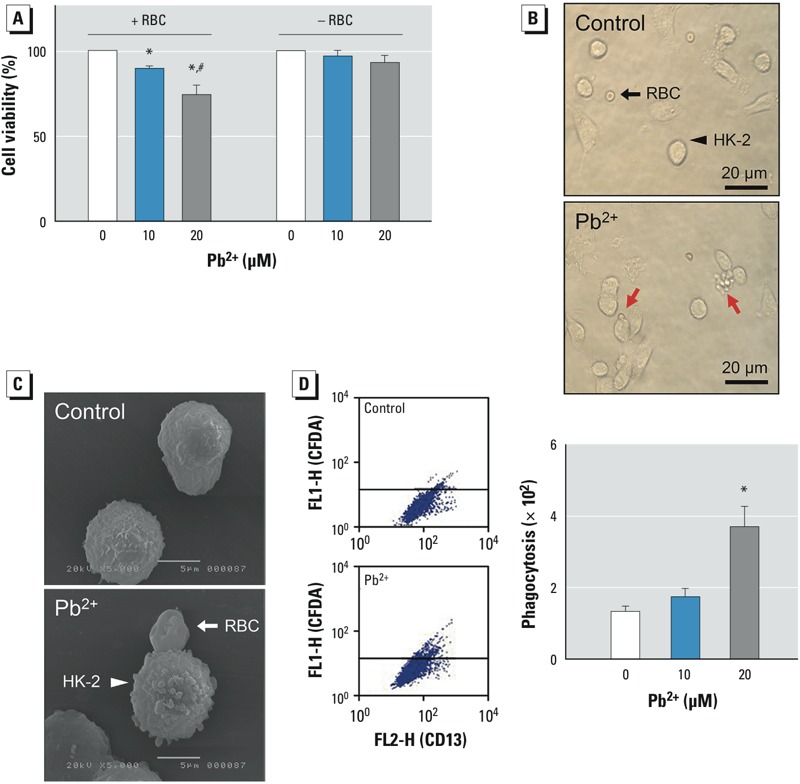Figure 1.

Effects of Pb2+-treated human erythrocytes [red blood cells (RBCs); 0 (control), 10, or 20 μM Pb2+] on HK-2 renal tubular epithelial cells. (A) Cell viability measured in HK-2 cells with (+) or without (–) co-incubation with Pb2+-treated erythrocytes. (B) Interactions were observed between Pb2+-treated erythrocytes and HK-2 cells (bottom; red arrows) but not between control erythrocytes and HK-2 cells (top; black arrows); bars = 20 μm. (C) Adherence of control (top) and Pb2+-treated (bottom) erythrocytes to HK-2 cells examined using scanning electron microscopy; bars = 5 μm. (D) Representative histograms (left) and the numbers of HK-2 cells that were fluorescence-positive by engulfment of CFDA-loaded erythrocytes (right) as analyzed by flow cytometry. Values shown are the mean ± SE of more than three independent experiments. *p < 0.05 compared with the corresponding control, determined by one-way ANOVA followed by Duncan’s multiple range test. #p < 0.05 compared with HK-2 cells treated with Pb2+ 20 μM in the absence of erythrocytes, determined by Student’s t-test.
